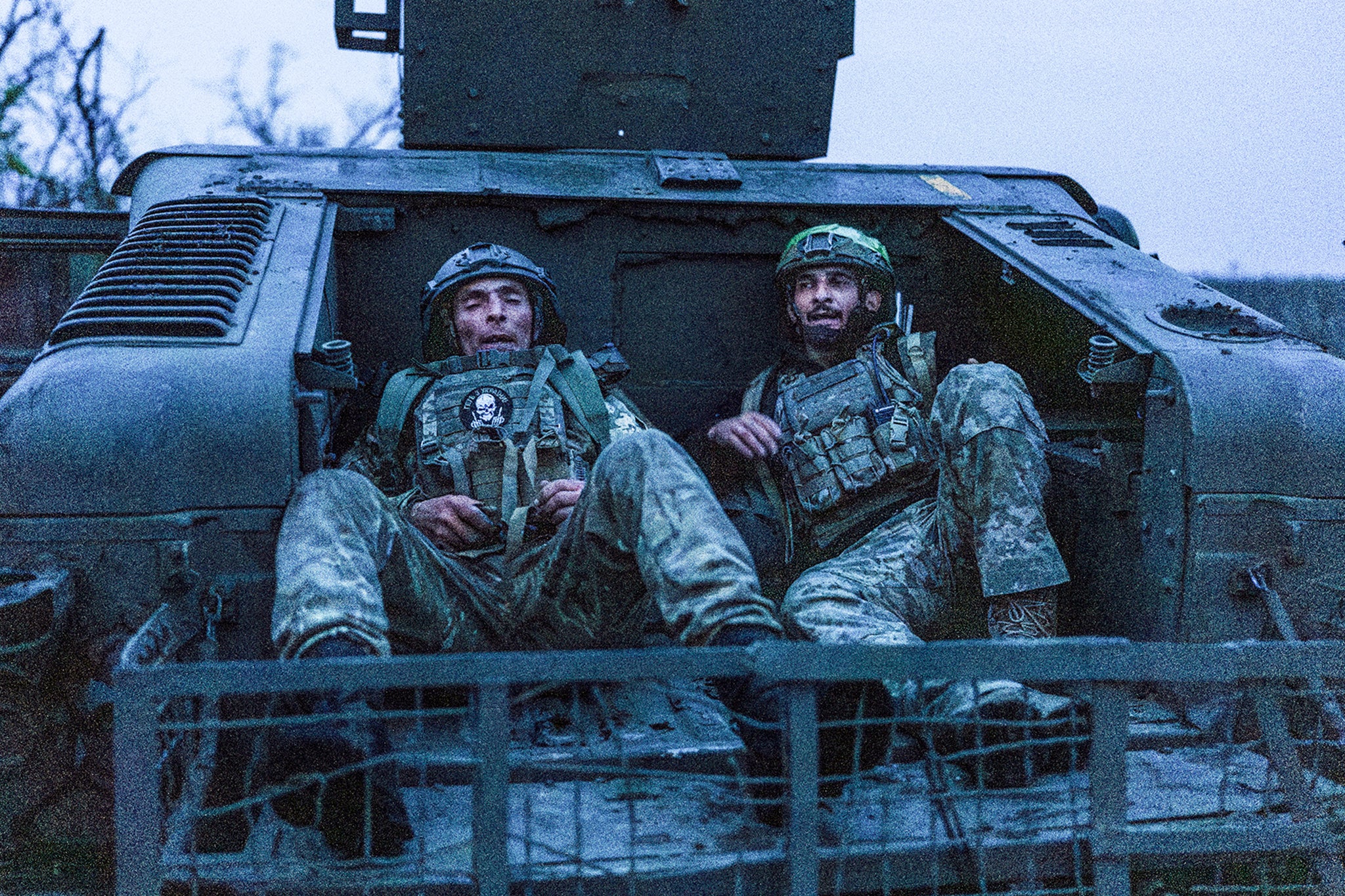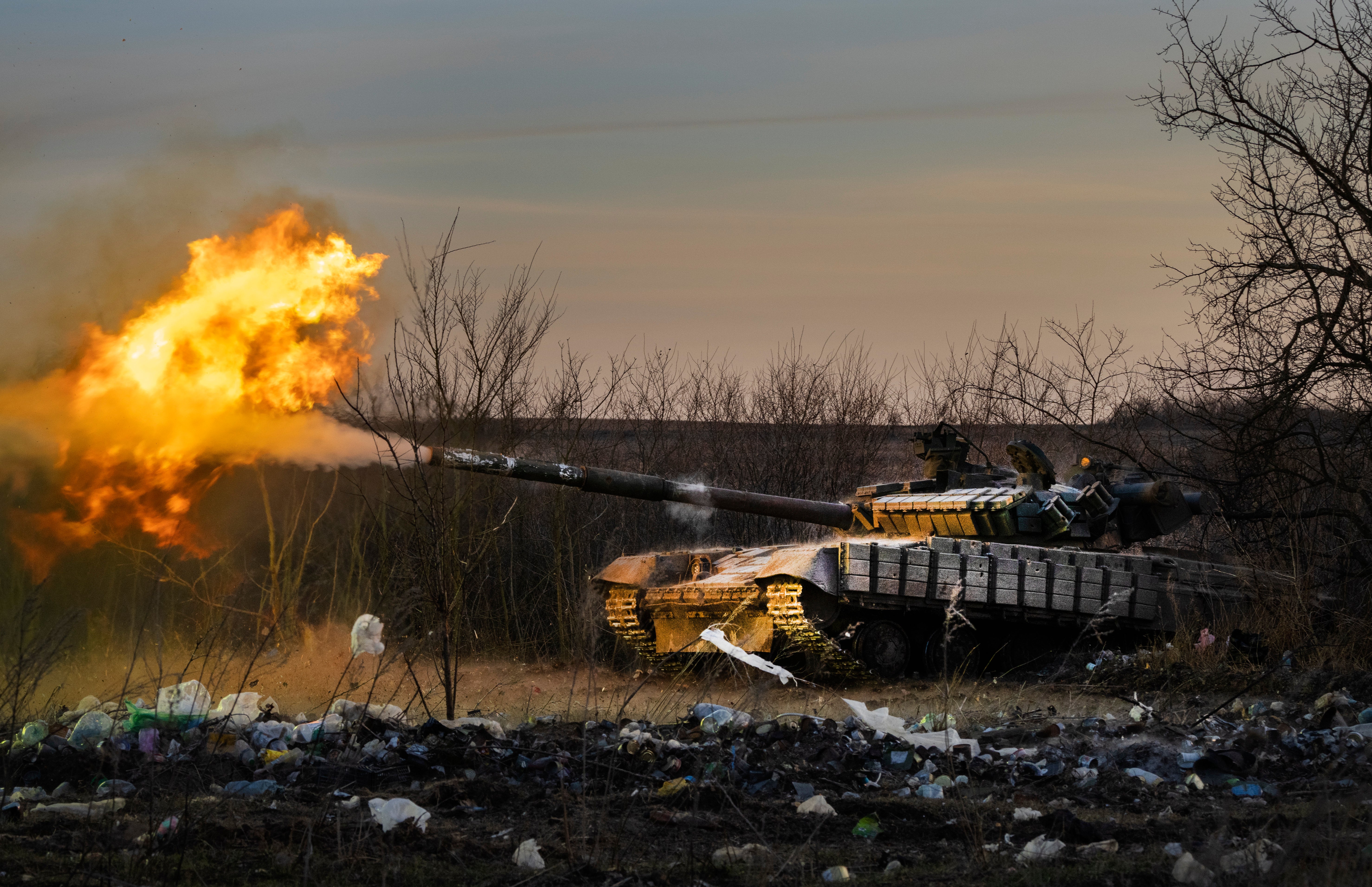The US will give $61bn to Ukraine. What does it mean for the war?
Congress has finally agreed on an aid package that will provide much-needed weaponry to the front lines in Ukraine. But a country at war cannot afford to wait while politicians argue, writes Olga Tokariuk

The new $61bn (£49bn) US aid package for Ukraine approved by Congress will undoubtedly improve the country’s battlefield position. Stocks of ammunition from US bases in Poland and Germany can now be shipped quickly to existing Ukrainian forces and allow newly mobilised troops to be equipped.
Critics of Ukraine’s mobilisation law, recently passed by the parliament in Kyiv, argued it made little sense to draft more men if there were no weapons to arm them: now that concern can be discarded.
The US package includes weapons Ukraine has long sought after and which can make a significant difference in the war, like long-range ATACMS missiles. These will improve Volodymyr Zelensky’s capability to threaten and destroy Russian military targets in occupied Crimea, forcing Russia to withdraw its equipment, enhancing Black Sea security.
The US vote also provides an important boost to morale, restoring hope that Western partners are delivering on their promises and sending a powerful signal to Russia.
Ukrainian soldiers have sent messages from the trenches, thanking the American people while MPs displayed American flags in Ukraine’s parliament.
Impact on the battlefield
In the short term, however, the battlefield situation will remain difficult. Ukraine’s defence intelligence chief has already warned that Russia might attempt a new offensive in May, while Russian forces have already captured around 360 square kilometres of territory this year, according to the Washington-based Institute for the Study of War.
Now the Russian military is pushing to seize the town of Chasiv Yar in the Donetsk region, hoping to take it before Moscow’s Victory Day parade on 9 May.
If captured, this would open the way for an advance to Ukraine’s Donbas strongholds of Sloviansk and Kramatorsk, with severe consequences for Ukraine’s strategic position.
Following the vote, Moscow will also probably intensify its drone and missile strikes, targeting Ukraine’s logistics routes, infrastructure and defence industrial base, left dangerously exposed in recent weeks by a shortage of air defences.
Recent Russian attacks have caused huge damage to Ukraine’s energy infrastructure and completely destroyed the largest thermal power plant in the Kyiv region, leaving vast parts of the country in a blackout.
The US is reportedly supplying one more Patriot missile defence system to Ukraine as a part of its aid package. But that will not be enough to protect Ukraine’s sky. Officials in Kyiv said they needed seven more Patriots. Germany has committed to sending one, and Spain and Greece are under pressure to transfer their systems to Ukraine.

Until they arrive, Ukraine will suffer more damage. Kharkiv, a city of 1.3 million people on the Russian border, is under particularly heavy daily bombardment – its mayor saying it was at risk of turning into a “second Aleppo”.
European support
The six-month delay in provision of US military aid has therefore had huge repercussions for Ukraine’s ability to defend itself, demonstrating that the unstable “crisis management” model of Western aid actually emboldens Russia to escalate, because it perceives Western hesitancy as weakness. It also shows that it is naive to believe that the front line in Ukraine can remain stable without a stable flow of Western military aid.
Without a better plan for consistent aid delivery, sooner or later Ukraine will again find itself in a critical situation. It is a welcome development that the new US bill acknowledges the need for more stable funding and calls for a multi-year strategy with “specific and achievable objectives” that hasten Ukrainian victory.
A long-term, sustainable strategy that enables an uninterrupted flow of Western military, regardless of election cycles and political squabbles, must be developed by the US, Europe and Ukraine’s other allies
However, US support should not be overly relied upon. Europe must act too, using the time Ukraine has bought it to get serious about defence – and the defence of Ukraine.
European countries must follow up on the US’s significant new commitment by urgently seeking to ramp up domestic ammunition production, moving faster with the delivery of 1 million artillery shells, promised long ago.
It must also finally get serious about increasing its military spending budgets. Europeans should also transfer more weapons to Ukraine, particularly air defence systems. Ukrainian officials say there are about a hundred Patriot missile defence systems in the world. Kyiv’s partners should use their diplomatic and financial heft to secure at least the seven Ukraine has requested.
Germany’s Olaf Scholz should also follow the example set by the US provision of ATACMS tactical missile systems to unblock the delivery of Taurus missiles to Ukraine.
A new funding strategy
Most importantly, the bitter experience with the US military aid package shows that the whole approach to supporting Ukraine must change. The US only approved an aid package after realising that Ukraine was on the brink of collapse. Many lives could have been saved if it had been released earlier. (At least 604 civilians were killed or injured in Ukraine in March alone) .
A long-term, sustainable strategy that enables an uninterrupted flow of Western military, regardless of election cycles and political squabbles, must be developed by the US, Europe and Ukraine’s other allies. Vital aid should never again be a hostage of domestic politics.
It can be done by legislatively committing to funding Ukraine in the long term. Bilateral security agreements Ukraine has so far signed with six EU countries and the UK allow for that – more similar agreements, including one with the US, are upcoming.
Money for this can be found by increasing national defence spending. The public should be told that allocating it now prevents much greater future expense and the need to risk the lives of their own servicemen and women.

Popular opinion across the West is mostly supportive of continuing and boosting funding for Ukraine (a recent example of Slovakia, where citizens crowdfunded almost €3m for artillery shells for Ukraine, shows that a solution can be found even in countries with reluctant governments). There’s also an idea of issuing EU bonds to finance efforts to ramp up Europe’s defence capabilities, supported by the presidents of France and Estonia.
Yet another option is to fund Ukraine’s defence effort with frozen Russian assets. Kyiv has been long campaigning for their seizure and transfer. The US bill authorises that for assets on American soil. Europe should follow suit.
Finally, keeping momentum in integrating Ukraine with Nato is key. Most senior officials agree that it is now a question of “when” and not “if”. The Washington Summit in July must boost the process of supporting mutual interoperability and send another powerful signal to Vladimir Putin that Ukraine will be a member.
The principle underlying support for Ukraine shouldn’t be for “as long it takes”, but “whatever it takes and as soon as possible”. A sense of urgency, and a clear understanding that the future of global democracy and peace is contingent on the success of Ukraine, should drive policymakers’ decisions. There is still time to save Ukraine and that future.
Olga Tokariuk is an academy fellow and Ukraine specialist at the Chatham House think tank
Join our commenting forum
Join thought-provoking conversations, follow other Independent readers and see their replies
Comments

Bookmark popover
Removed from bookmarks